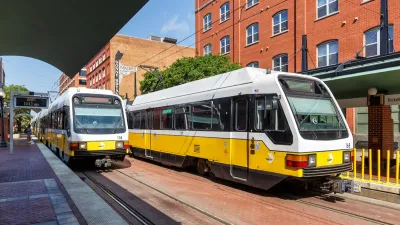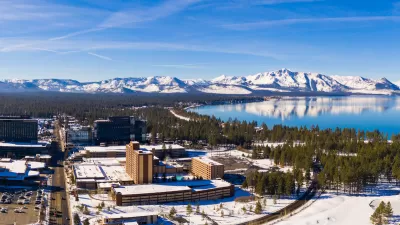Hillary Brown argues that the infrastructure priorities of the American Reinvestment and Recovery Act further the carbon-intensive status quo and miss an unprecedented opportunity to build innovative, green systems.
At $132 billion, ARRA provides only a fraction of $2.2 trillion needed to repair and upgrade America's infrastructure, notes Brown. Furthermore, she says, by emphasizing private transportation over public, underfunding clean energy projects and doing nothing to break down the 'siloed thinking' that plagues the public works sector, ARRA will simply perpetuate the inefficiencies of current systems.
Instead, the next generation of infrastructure should employ 'bold strategies': co-location and integration of diverse functions, models that work in concert with natural processes, projects that bring programmatic benefits to communities, and resilient design capable of adapting to global climate change.
However, the ultimate challenge to smart infrastructure may be political rather than technical, Brown writes:
"Designing appropriate, sustainable technologies may be the least challenging aspect of our American infrastructural dilemma. The more daunting problem is our dysfunctional governance - a political culture that seems unwilling to commit to implementing what we know we need, and know how to make."
FULL STORY: Infrastructural Ecologies: Principles for Post-Industrial Public Works

Study: Maui’s Plan to Convert Vacation Rentals to Long-Term Housing Could Cause Nearly $1 Billion Economic Loss
The plan would reduce visitor accommodation by 25,% resulting in 1,900 jobs lost.

Alabama: Trump Terminates Settlements for Black Communities Harmed By Raw Sewage
Trump deemed the landmark civil rights agreement “illegal DEI and environmental justice policy.”

North Texas Transit Leaders Tout Benefits of TOD for Growing Region
At a summit focused on transit-oriented development, policymakers discussed how North Texas’ expanded light rail system can serve as a tool for economic growth.

Paris Bike Boom Leads to Steep Drop in Air Pollution
The French city’s air quality has improved dramatically in the past 20 years, coinciding with a growth in cycling.

Why Housing Costs More to Build in California Than in Texas
Hard costs like labor and materials combined with ‘soft’ costs such as permitting make building in the San Francisco Bay Area almost three times as costly as in Texas cities.

San Diego County Sees a Rise in Urban Coyotes
San Diego County experiences a rise in urban coyotes, as sightings become prevalent throughout its urban neighbourhoods and surrounding areas.
Urban Design for Planners 1: Software Tools
This six-course series explores essential urban design concepts using open source software and equips planners with the tools they need to participate fully in the urban design process.
Planning for Universal Design
Learn the tools for implementing Universal Design in planning regulations.
Smith Gee Studio
Alamo Area Metropolitan Planning Organization
City of Santa Clarita
Institute for Housing and Urban Development Studies (IHS)
City of Grandview
Harvard GSD Executive Education
Toledo-Lucas County Plan Commissions
Salt Lake City
NYU Wagner Graduate School of Public Service





























